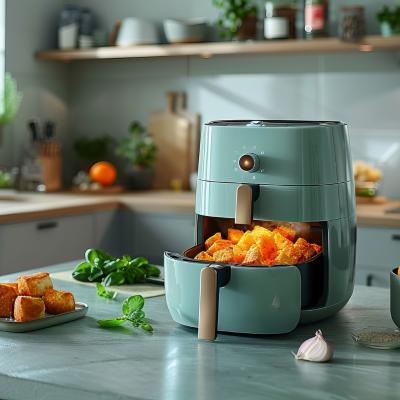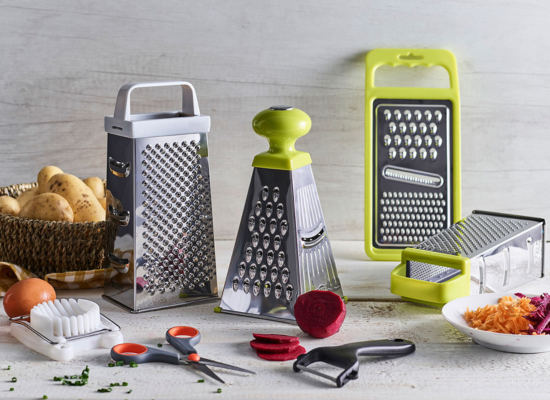
Are you setting up your kitchen and confused about what should be the distance between The Stove And Microwave? Nothing to worry about; this article will get you in detail about this solved mystery.
The general rule is 30 inches between the top of the microwave and the oven’s surface. This may not always be possible, but 14-15 inch gaps will suffice most times without compromising safety too much.
Have you ever tried different configurations to see what works best for you? But what if we tell you that there’s a lot more to this question? Read reading to find out!
Can You Put a Microwave Next to the Stove?
It is up to you, your personal preference, and your kitchen layout. Some people like having their microwave in the same area as the stove, while others prefer it in a different location.
If you are thinking about putting a microwave next to the stove, there are a few things you should take into consideration.
Appropriate Space Between Both Appliances
First, make sure that there is enough space between the two appliances so that you can easily open the doors and access them when needed.
Usage of Appliances
Second, consider how the microwaves and stoves will be used. If you use your oven frequently, you may want to place the microwave next to the oven to use them both simultaneously.
However, if you only use your microwave for reheating food or making popcorn, it may be better to place it elsewhere in the kitchen.
Ventilation of Kitchen
Another thing to consider is the ventilation of your kitchen. If the stove and microwave are placed next to each other, ensure adequate ventilation so fumes of the stove do not enter the microwave.
Also, check the labels on both appliances to see if they indicate they need to be vented outside.
Power Cord Placement
Finally, think about the power cord placement. If the microwave is placed next to the stove, make sure that the power cord can reach both appliances without being obstructed.
Also, keep the cord away from any areas where it could be a trip hazard.
By following these simple tips, you can ensure that placing a microwave next to the stove is safe and convenient for your kitchen.
Minimum Height Recommended for Placing a Microwave Over the Stove
The minimum height varies depending on the stove’s height and the size of the microwave. However, at least 15 inches of clearance between the stove’s top and the microwave’s bottom is enough.
Additionally, it’s essential to make sure that at least 3-4 inches between the back of the microwave and any wall or cabinets so that heat from the appliance does not build up over time.
LEARN MORE: How to Warm Up Milk in Microwave
How Much Distance Does a Microwave Need on Sides?
The distance recommendation of the microwave side is different depending on the particular model and design of the microwave.
It is best practice to leave a minimum of three to four inches of space on all sides of the microwave to allow for adequate air circulation and heat dissipation.
To further reduce the risk of an accident occurring, make sure that the area immediately surrounding the microwave is spotless and devoid of any combustible materials (such as paper towels, magazines, etc.).
Why Is Microwave Ventilation Necessary?
Most people don’t think about microwave ventilation, but it’s essential for keeping your kitchen clean and safe. Here’s why:
- Microwaves produce a lot of heat, and if that heat isn’t properly vented, it can build up and cause fires.
- Microwave ventilation helps prevent mold and mildew growth by allowing air to circulate through the appliance.
- Ventilated microwaves also tend to work more efficiently since they’re not working against the natural flow of air.
- Finally, proper microwave ventilation helps to reduce cooking odors in your kitchen. So if you’re trying to keep your kitchen smelling fresh and clean, ventilation is key.
Ventilation Hacks
There are two hacks to ventilate your microwave. The most common method is to install a vent fan above the stove. This will draw air up and out of the kitchen, taking cooking odors.
Another option is to install a hood over the stove that vents to the outdoors. It is a more expensive option, but it will do a better job of removing odors from your kitchen.
Regardless of the approach you go with, you need to follow the instructions provided by the manufacturer carefully. Installation that is not done correctly can result in issues later. If you are ever unsure, do not be afraid to seek the assistance of a trained professional.
Is Stovetop Steam Dangerous for a Microwave?

The heat from the stove is dangerous if the microwave is placed above the stove. The radiation from the microwave can bounce off the stove and cause damage to the inside of the microwave.
It’s best to place the microwave below the stove or at least 15-18 inches above it to avoid potential damage.
Risks of Placing the Microwave Above or Below the Recommended Minimum Height
There are a few risks associated with placing your microwave close to the stove.
- First, if the stove is gas, there is a risk of explosion.
- Second, if the stove is electric, there is a risk of electrical shock.
- Third, if the microwaves from the microwave oven heat any object on the stovetop (including food), there is a danger of fire.
- Fourth, if you have a glass stovetop, there is a danger of shattering the glass.
- Finally, if you have an open flame on the stove, there is a danger of igniting objects in the microwaves and causing a fire.
These risks outweigh any benefits of placing your microwave close to the stove.
Conclusion
So, how much distance should be between the stove and microwave? As it turns out, there is no one definitive answer to this question. Depending on your specific situation and layout, you may need more or less space between these two appliances.
However, as a general rule of thumb, it’s best to keep at least six inches of clearance between them. If you have any doubts about whether or not your set-up is safe, it’s always better to be safe than sorry – so contact an expert for help.



